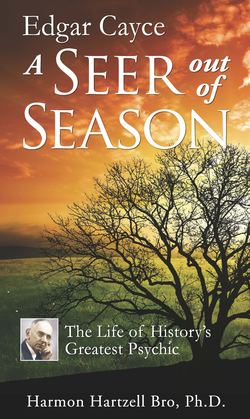Читать книгу Edgar Cayce A Seer Out of Season - Harmon Hartzell Bro - Страница 34
На сайте Литреса книга снята с продажи.
CHAPTER 4 No Disease without a Cure
ОглавлениеOne rainy afternoon a car pulled up at the foot of the walk that curved to the Cayce home and offices. A woman in her thirties climbed out, hoisted herself onto crutches, tugged her crippled legs to the steps, and entered the door to the library, where half a dozen of us were working. She had stopped by before to see a volunteer on our small staff who was giving her daily massages at her home for her poliomyelitis handicap. “Watch!” she commanded us. Laying down her crutches, she slowly walked the length of the room unaided, then back again while we shouted and applauded. There were tears in the room. Her achievement had climaxed two years of intensive daily work in a taxing, multiform regimen specified by readings. We all knew how rarely, anywhere in the country, limbs were restored after damage by this frightening disease. She had more rebuilding of her body to do but left using her crutches jauntily, delighted with her small but triumphant excursion.
Soon after came another case just as forceful. A naval officer in uniform arrived with his wife and infant from the Chicago area for a reading which seemed their last hope. The child was crying, and I offered to hold it while the parents went into the study. It never stopped crying. The little boy had been in and out of hospitals, suffering with cancer of the head and eyes, which had made him blind. His pain was continuous. When the parents emerged from the reading an hour later, it was bewildering to see them smiling and energetic, for the case had seemed impossible to cure. According to “the information,” they could expect a full recovery. They must undertake without deviation a complex treatment under the care of a Philadelphia physician. (I followed the boy’s dramatic case all the way to complete cure and restoration of his vision, keeping the doctor as a colleague and friend for thirty years.)
We had to be mindful of spontaneous remissions. And there were faith cures; how the mind could influence the body had been shown in studies of what was called the “subliminal” region by William James23 and F.W.H. Myers24 and so brilliantly elaborated by Freud25 and others as the unconscious. Such influences could not and should not be ruled out in remarkable cases of healing. But one could not overlook, either, Cayce’s specific clinical procedures, used under medical supervision. Months or years of tedious effort were often required. To be sure, the demanding nature of this effort sometimes seemed part of the cure because it taxed and fired the faith and active love of all those involved.
The faces of the cripple and the tormented baby stayed with me as I interviewed scores of other subjects and talked with their family members. Especially compelling were children whom Cayce had guided through threatened births or rescued from life-imperiling illnesses. Even while I played and teased with them after interrogating their parents, I weighed the thought: this youngster might not be here at all but for a photographer who took better pictures than our culture thought possible.
